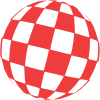-
Notifications
You must be signed in to change notification settings - Fork 7
Image templates
HstWB Installer comes with a set of image templates, which are partitioned, formatted and ready for use to create new installations of Amiga OS. These are sized to fit various CF and SD-cards commonly used as modern harddrive replacement for Amiga's. Each image template has a small boot partition and large data partition.
For compatibility with real Amiga's most image templates use RDB (Rigid Disk Block), which describes the structure of the disk and has binaries for filesystems used.
Most use PFS3AIO filesystem for improved speed and support large harddrives above 4GB. Few use FastFileSystem for compatibility and unexpanded Amigas with only chip memory.
HstWB Installer has following image templates included to build new images from:
- 2GB: HDF RDB, DH0 (100MB DOS\07), DH1 (1.7GB DOS\07)
- 2GB: HDF RDB, DH0 (300MB DOS\07), DH1 (1.5GB DOS\07)
- 4GB: HDF RDB, DH0 (100MB DOS\07), DH1 (3.4GB DOS\07)
- 4GB: HDF RDB, DH0 (100MB PDS\03), DH1 (3.4GB PDS\03)
- 4GB: HDF RDB, DH0 (300MB PDS\03), DH1 (3.2GB PDS\03)
- 8GB: HDF RDB, DH0 (100MB PDS\03), DH1 (6.9GB PDS\03)
- 8GB: HDF RDB, DH0 (300MB PDS\03), DH1 (6.7GB PDS\03)
- 16GB: HDF RDB, DH0 (500MB PDS\03), DH1 (13.7GB PDS\03)
- 32GB: HDF RDB, DH0 (500MB PDS\03), DH1 (27.8GB PDS\03)
- 64GB: HDF RDB, DH0 (500MB PDS\03), DH1 (56.1GB PDS\03)
- UAE4ARM: DH0 (100MB DOS\03), DH1 (DIR)
- UAE4ARM: DH0 (300MB PFS\03), DH1 (DIR)
The image templates are created with FastFileSystem and PFS3AIO filesystem by Toni Wilen.
PFS\03 and PDS\03 partitions are formatted with pfsformat and set filename size to 107 characters. Partitions are created with HDToolbox and configured with MaxTransfer value 0x1fe00. Partitions on these images are created so they are smaller than various CF/SD cards and can be written to CF/SD card using eg. Win32DiskImager for use in real Amiga's.
UAE4ARM images are created as single partition HDF images without RDB for compatibility with emulators like WinUAE, FS-UAE, Amiberry and UAE4ARM. These images also use harddrive added a directory mounted, so harddrives can be greater than 2GB.
An image template for HstWB Installer is a zip file containing set of HDF and configuration files, which are used to build a new image. Image templates are located in "images" directory.
Each image template zip file contains the following files:
- image.ini (Required): Ini file with image name.
- harddrives.uae (Required): WinUAE configuration of harddrives for image with [$ImageDir] and [$ImageDirEscaped] placeholders replaced with directory containing image files, when HstWB Installer is launched.
- disk.hdf (Optional): One or more HDF files ready for use and configured in harddrives.uae.
Image.ini example:
[Image]
Name=4GB: HDF RDB, DH0 (100MB/PFS3), DH1 (3500MB/PFS3)
Harddrives.uae example:
hardfile2=rw,DH0:[$ImageDir]\4gb.hdf,0,0,0,512,0,,uae
uaehf0=hdf,rw,DH0:"[$ImageDirEscaped]\\4gb.hdf",0,0,0,512,0,,uae
A new image can be created using the setup script by selecting create a new image directory from image template. It will read harddrives.uae file from the image zip file, extract HDF's and create directories defined in "uaehf" lines.
When HstWB Installer is launched, it reads harddrives.uae file from the image directory and merges it into it's WinUAE configuration. Placeholders [$ImageDir] and [$ImageDirEscaped] are replaced with the ImageDir configured in HstWB Installer settings. As an example, the placeholders will be replaced by the following, if ImageDir is configured to "C:\Temp\HstWB-4GB":
[$ImageDir] -> C:\Temp\HstWB-4GB
[$ImageDirEscaped] -> C:\\Temp\\HstWB-4GB
The escaped placeholder is needed for quoted paths like:
uaehf0=hdf,rw,DH0:"[$ImageDirEscaped]\\4gb.hdf",0,0,0,512,0,,uae
Own image templates can be created by following the examples above or use files from one of the existing image templates to get started. Configuration of harddrives.uae can directly be copied from a saved WinUAE configuration, just replace directory paths with [$ImageDir] and [$ImageDirEscaped] placeholders.
